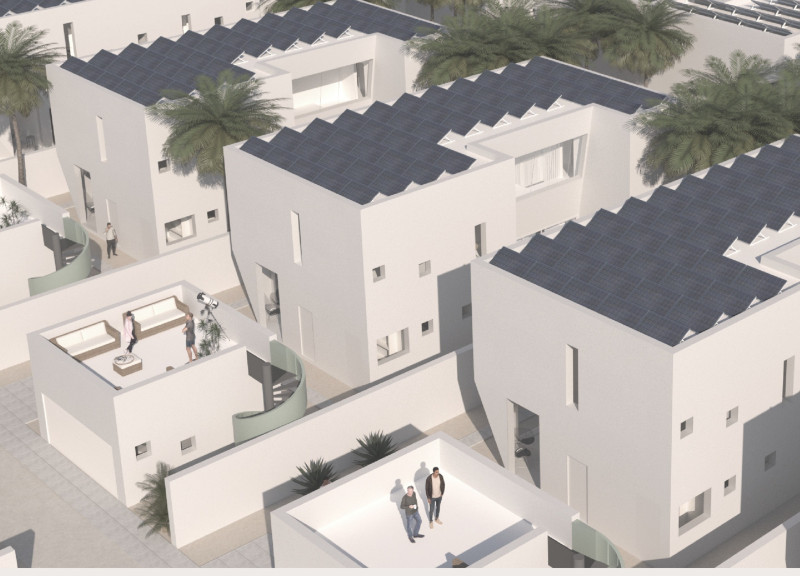5 key facts about this project
At its core, the project functions as a multipurpose facility that caters to both individual and communal needs. It encompasses various spaces, including residential units, communal areas, and service spaces, designed to foster interaction and collaboration among its occupants. The layout encourages a flow from public to private realms, reflecting a sensitivity to the dynamics of urban living. The careful arrangement of spaces maximizes both sunlight exposure and cross-ventilation, which are essential for creating a comfortable indoor environment while minimizing energy consumption.
In terms of materials, the project utilizes a palette that emphasizes sustainability and durability. The primary materials used include reinforced concrete, which provides structural integrity while allowing for versatile design expressions, and large expanses of glass that facilitate visual connectivity with the exterior landscape. The incorporation of natural wood elements not only enhances the aesthetic quality but also creates a warm and inviting atmosphere that contrasts effectively with the sleekness of the concrete and glass. Other materials, including steel for structural elements and high-performance insulation, contribute to the overall efficiency and resilience of the building.
The unique design approach taken in this project reflects a deep understanding of modern architectural principles. The façade, characterized by its rhythmic patterns and varying depths, creates an engaging visual texture that draws the observer's eye. This modulation serves not only as a design feature but also as a means of reducing solar gain and enhancing thermal performance. The careful consideration of sightlines and vistas further enriches the user's experience by framing views of the surrounding environment, promoting a sense of connection with nature even within an urban setting.
In addition to its aesthetic appeal, the architectural design incorporates sustainable practices throughout its development. Rainwater harvesting systems and green roofs are seamlessly integrated into the structure, demonstrating an effective response to environmental challenges while enhancing biodiversity. These elements signify a growing awareness within contemporary architecture of the need for responsible building practices that respect ecological balance.
The interior spaces are designed with flexibility in mind, allowing for various configurations to accommodate changing needs over time. This adaptability speaks to the forward-thinking nature of the project, as it anticipates the evolving demands of urban life. Each room is carefully proportioned to create a sense of intimacy without compromising utility, encouraging occupants to engage actively with their environment.
In observing this architectural project, one can appreciate how it stands as a testament to thoughtful design and planning. Its ability to marry functionality with aesthetic considerations reflects a mature understanding of architectural principles aimed at fostering community and enhancing well-being. As you explore the project presentation, take a closer look at the architectural plans, sections, designs, and innovative ideas that underpin this endeavor. Engaging with these elements will provide deeper insights into the comprehensive nature of the project and its relevance in today's architectural landscape.


 Nellie Lazzarini
Nellie Lazzarini 























